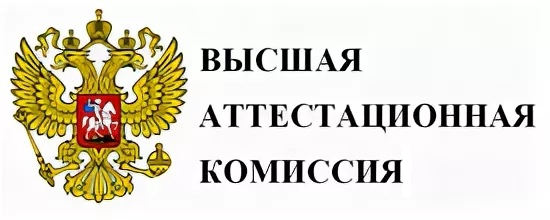- DOI: 10.31509/2658-607x-202582-170
- УДК 595.2: 537.017: 574.472
MODELING THE DYNAMICS OF SPECIES NUMBERS IN COLLEMBOLA COMMUNITIES
V. G. Soukhovolsky1*, N. A. Kuznetsova2, A. V. Kovalev3
1Isaev Centre for Forest Ecology and Productivity of the RAS
Profsoyuznaya st. 84/32 bldg. 14, Moscow 117997, Russia
2Moscow State Pedagogical University
Malaya Pirogovskaya St., 1, bldg. 1, Moscow 119435, Russia
3Federal Research Center KSC SB RAS,
Akademgorodok, 50, Krasnoyarsk 660036, Russia
*E-mail: soukhovolsky@yandex.ru
Received: 20.05.2025
Revised: 16.06.2025
Accepted: 19.06.2025
The population dynamics of springtails is considered based on long-term surveys. The analysis was performed using data on the total population springtails density of three functional groups. The S group of springtails unites eu- and hemiedaphic forms inhabiting the litter and underlying soil horizons. Springtails of group U include upper litter forms living on the surface of the litter. Group A consists of atmobiontic springtails rising into the ground vegetation cover. For the time series of the dynamics of the number of springtails in each group, ADL (autoregressive distributed lag) models were considered, in which the current population dynamics of springtails was determined as dependent, firstly, on the regulating factors – the number of springtails in three previous counts, and, secondly, on the modifying factor – the accumulated air temperature for three weeks before the date of the count. The proposed model allowed us to describe quite accurately (the determination coefficients R2 for all groups exceeded 0.7) the long-term population dynamics of three functional groups springtails. To assess the stability of the population dynamics of springtails, such an indicator as the stability reserve of the ADL model was calculated and it was shown that the population dynamics of springtails is quite stable and exceeds the stability reserve indicators of forest insect populations.
Keywords: soil mesofauna, soil, litter, long-term monitoring
REFERENCES
Bazykin A. D., Matematicheskaja biofizika vzaimodejstvujuwih populjacij (Mathematical biophysics of interacting populations), Moscow: Nauka, 1985, 181 p.
Bazykin A. D., Nelinejnaja dinamika vzaimodejstvujuwih populjacij (Nonlinear dynamics of interacting populations), Moskva-Izhevsk: Institut komp’juternyh tehnologij, 2003, 368 p.
Berryman A. A., On principles, laws and theory in population ecology, Oikos, 2003, Vol. 103, No 3, pp. 695–701.
Berryman A. A., Population systems: a general introduction, New York: Plenum Press, 1981, 222 p.
Bokhorst S., Phoenix G. K., Bjerke J. W., Callaghan T. V., Huyer-Brugman F., Berg M. P., Extreme winter warming events more negatively impact small rather than large soil fauna: shift in community composition explained by traits not taxa, Global Change Biology, 2012, Vol. 18, pp. 1152–1162, DOI: 10.1111/j.1365-2486.2011.02565.x
Britton N. F., Essential mathematical biology, Springer: London. 2003. 335 p.
Bulmer M. G., A statistical analysis of the 10-year cycle in Canada, Journal of Animal Ecology, 1974, No 43, pp. 701–718.
Deng B., An Inverse Problem: Trappers Drove Hares to Eat Lynx, Acta Biotheoretica, 2018, Vol. 66, pp. 213–242.
Dorf R. K., Bishop P. X., Sovremennye sistemy upravlenija (Modern control systems), Moscow: Laboratorija Bazovyh Znanij, 2004, 832 p.
Dzhenkins G., Vatts D., Spektral’nyj analiz i ego prilozhenija (Spectral analysis and its applications), Moscow: Mir. 1971, Vol. 1, 316 p.; Vol. 2, 287 p.
Elton C., Nicholson M., The ten-year cycle in numbers of the lynx in Canada, Journal of Animal Ecology, 1942, No 11, pp. 215–244.
Gajduk A. R., Beljaev V. E., P’javchenko T. A., Teorija avtomaticheskogo upravlenija v primerah i zadachah (Theory of automatic control in examples and problems), SPb.: Lan’, 2011, 464 p.
Gause G. F., The Struggle for Existence, Baltimore: Williams and Wilkins, 1934, 163 p.
Giljapov M. S., Uchet melkih chlenistonogih (mikrofauny) i nematod (Accounting of small arthropods (microfauna) and nematodes), Metody pochvenno-zoologicheskih issledovanij, Moscow: Nauka, 1975, pp. 30–43.
Gilpin M. E., Do hares eat lynx? The American Naturalist, 1973, Vol. 107, No 957, pp. 727–730.
Gomatam J., A new model for interacting populations two species systems, Bulletin of Mathematical Biology, 1974, Vol. 36, pp. 347–353.
Hassall M., Adl S., Berg M., Griffiths B., Scheu S., Soil fauna–microbe interactions: towards a conceptual framework for research, European Journal of Soil Biology, 2006, Vol. 42, Suppl. 1, pp. S54–S60, DOI: 10.1016/j.ejsobi.2006.07.007
Hemming R. V., Cifrovye fil’try (Digital filters), Moscow: Nedra, 1987, 221 p.
Hewitt C. G., The conservation of the wild life of Canada, New York: Charles Scribner′s Sons, 1921, 344 р.
Hopkin S. P., Biology of the springtails: (Insecta: Collembola), Oxford University Press, 1997, 330 p.
Hutchinson G. E., Theory of Competition Between two social species, Ecology, 1947, Vol. 28, pp. 319–321.
Isaev A. S, Soukhovolsky V. G., Tarasova O. V., Palnikova E. N., Kovalev A. V., Forest Insect Population Dynamics, Outbreaks and Global Warming Effects, New York: Wiley, 2017, 298 p.
Isaev A. S., Khlebopros R. G., Nedorezov L. V., Kondakov Ju.P., Kiselev V. V., Soukhovolsky V. G., Populjacionnaja dinamika lesnyh nasekomyh (Population dynamics of forest insects), Moscow: Nauka, 2001, 347 p.
Isaev A. S., Khlebopros R. G., Princip stabil’nosti v dinamike chislennosti lesnyh nasekomyh (The principle of stability in the dynamics of forest insect populations), Doklady AN SSSR, 1973, Vol. 208, No 1, pp. 225–228.
Isaev A. S., Pal’nikova E. N., Soukhovolsky V. G., Tarasova O. V., Dinamika chislennosti lesnyh nasekomyh-fillofagov: modeli i prognozy (Population Dynamics of forest phyllophagous insects: models and forecasts), Moscow: Tovariwestvo nauchnyh izdanij KMK, 2015, 276 p.
Jucevica E., Melecis V., Global warming affect Collembola community: A long-term study, Pedobiologia, 2006, Vol. 50, No 2, pp. 177–184, DOI: 10.1016/j.pedobi.2005.10.006
Keith L. B., Wildlife’s ten-year cycle, Madison: University of Wisconsin Press, 1963, 221 p.
Kim D. P., Teorija avtomaticheskogo upravlenija (Theory of automatic control), Moscow: Fizmatlit, 2007, Vol. 1, 312 p.
Klassifikaciya pochv Rossii (Classification of soils in Russia), Moscow: Pochv. in-t im. V. V. Dokuchaeva, 1997, 235 p.
Kolesov Ju. S., Nekotorye zadachi matematicheskoj jekologii, Differencial’nye uravnenija i ih primenenie (Some problems of mathematical ecology), Vil’njus, 1981, No 29, pp. 27–35.
Kuznecova N. A., Kollemboly kak model’naja gruppa v biocenologicheskih issledovanijah (Collembola as a model group in biocenological studies), Chtenija pamjati akademika Merkurija Sergeevicha Giljarova, 3-i chtenija – 22 dekabrja 2006 g., Moskva, Moscow: KMK, 2008, pp 11–48.
Kuznetsova N. A., Long-term dynamics of Collembola in two contrast ecosystems, Pedobiologia, 2006, Vol. 50, No 2, pp. 157–164, DOI: 10.1016/j.pedobi.2005.12.004
Kuznetsova N. A., Long-term Dynamics of Collembolan population in Forest and Meadow Ecosystems, Entomological Review, 2007, Vol. 87, No 1, pp. 11–24, DOI: 10.1134/S0013873807010022
Leigh G., The ecological role of Volterra’s equations, Some of Mathematical Problems of Biology. Proceedings of the Symposium of the Mathematical Society, Washington Providence, 1968, рр. 1–61.
Levich A. P., Analiz cenozov v jekologii soobwestv s pomow’ju rangovyh raspredelenij (Analysis of cenoses in community ecology using rank distributions), Obshchaya i prikladnaja cenologija, 2007, No 5, pp. 14–19.
Levich A. P., Zaburdaeva E. A., Maksimov V. N., Bulgakov N. G., Mamikhin S. V., The Search for Target Values of Quality Indices for Bioindicators of the Ecological State and Environmental Factors: Case Study of Water Bodies of the Don River, Water Resources, 2009, Vol. 36, No 6, pp. 706–717.
Lotka A. J., Elements of Physical Biology, Baltimore: Williams and Wilkins, 1925, 460 p.
Maaß S., Caruso T., Rillig M. C., Functional role of microarthropods in soil aggregation, Pedobiologia, 2015, Vol. 58, pp. 59–63, DOI: 10.1016/j.pedobi.2015.03.001
Marri Dzh., Nelinejnye differencial’nye uravnenija v biologii. Lekcii o modeljah (Nonlinear differential equations in biology, Lectures on models, Moscow: Mir, 1983, 397 p.
Matthews T. J, Whittaker R. J., On the species abundance distribution in applied ecology and biodiversity management, Journal of Applied Ecology, 2015, Vol. 52, pp. 443–454.
McGill B. J., Etienne R. S., Gray J. S., Alonso D., Anderson M. J., Benecha H. K., White E. P., Species abundance distributions: moving beyond single prediction theories to integration within an ecological framework, Ecology letters, 2007, Vol. 10, No 10, pp. 995–1015.
Megarran J. E., Jеkologicheskoe raznoobrazie i ego raspredelenie (Ecological diversity and its distribution), Moscow: Mir, 1992, 181 p.
Odum E. P., Barrett G. W., Fundamentals of ecology, Philadelphia, 1971, 574 p.
Petersen H. Luxton M., A comparative analysis of soil fauna populations and their role in decomposition processes, Oikos, 1982, Vol. 39, pp. 288–388, DOI: 10.2307/3544689
Potapov A. M., Guerra C. A., Van den Hoogen J., Babenko A., Bellini B. C., Berg M. P., … & Scheu S., Globally invariant metabolism but density-diversity mismatch in springtails, Nature Communications, 2023, Vol. 14, No 1, pр. 674, DOI: 10.1038/s41467-023-36216-6
Potapov A., Bellini B. C., Chown S. L., Deharveng L., Janssens F., … & Scheu S. Towards a global synthesis of Collembola knowledge: challenges and potential solutions, Soil organisms, 2020, Vol. 92, No 3, pp. 161–188, DOI:10.25674/so92iss3pp161
Potapov M. B., Kuznetsova N. A., Metody issledovanija soobwestv mikroartropod: posobie dlja studentov i aspirantov, (Methods of studying microarthropod communities: a manual for students and postgraduates), Moscow: KMK, 2011, 77 p.
Puzachenko Ju. G., Rangovye raspredelenija v jekologii i nejekstensivnaja statisticheskaja mehanika (Rank distributions in ecology and extensive statistical mechanics), Sbornik trudov ZIN, 2016, Vol. 54, pp. 42–71.
Rohner C., The numerical response of great horned owls to the snowshoe hare cycle: consequences of non-territorial ‘floaters’ on demography, Journal of Animal Ecology, 1996, No 65, pp. 359–370.
Royama T., Analytical population dynamics, Leningrad, Chapman and Hall, 1992, 371 p.
Soukhovolsky V., Kovalev A., Tarasova O., Martemyanov V., Regulatory characteristics of population density dynamics of forest insects and possible reasons for the observed narrow range of such characteristics, Chaos, Solitons and Fractals, 2025, Vol. 191, Article 115949, DOI: 10.1016/j.chaos.2024.115949
Stenseth N. C., Falck W., Bjørnstad O. N., Krebs C. J., Population regulation in snowshoe hare and Canadian lynx: asymmetric food web configurations between hare and lynx, Proceedings of the National Academy of Sciences of the United States of America, 1997, No 94, pp. 5147–5152.
Suhovol’skij V. G., Jekonomika zhivogo (Economy of the living), Novosibirsk: Nauka, 2004, 140 p.
Svirezhev Ju. M., Logofet D. O., Ustojchivost’ biologicheskih system (Stability of biological systems), Moscow: Nauka, 1978, 352 p.
Turchin P., Complex Population Dynamics: A Theoretical, Empirical Synthesis, Princeton: Princeton University Press, 2003, 536 p.
Volterra V., Fluctuations in the abundance of a species considered mathematically, Nature, 1926, Vol. 188, pp. 558–560.
Vol’terra V., Matematicheskaja teorija bor’by za suwestvovanie (Mathematical theory of the struggle for existence), Moscow: Nauka, 1976, 288 p.
Whittaker R. H., Dominance and Diversity in Land Plant Communities, Science, 1965, Vol. 147, Issue 3655, pp. 250–260, DOI: 10.1126/science.147.3655.250
Zhang Z., Tao Y., Li Z., Factors affecting hare–lynx dynamics in the classic time series of the Hudson Bay Company, Canada, Climate Research, 2007, Vol. 34, No 2, рр. 83–89.





